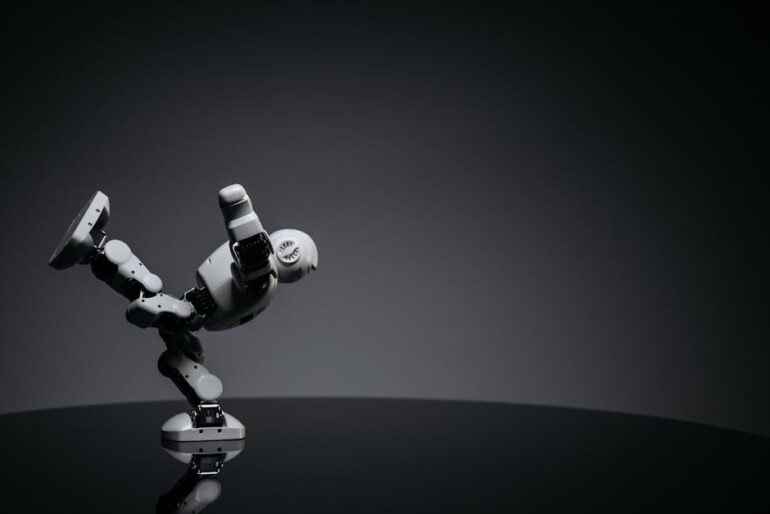Table of Contents
It’s 2025, and you might think, with all the fancy video stuff and influencer buzz, that plain old social display ads are, like, totally last year. But honestly, if you’re still thinking that, you’re missing out on a big piece of the pie. These aren’t your grandma’s banner ads from way back when. Social display ads now? They’re a whole different animal, and they’re really good at getting people’s attention, especially when done right.
Think about it. We’re all still scrolling, right? All day, every day, we’re glued to our phones, flipping through feeds on TikTok, Instagram, even X (still hard to call it X, feels weird). And while we’re doing that, brands have this sweet spot to pop up with something that looks good, maybe even useful, and doesn’t totally scream “BUY ME NOW!” That’s where social display ads come in. They’re these little picture or graphic ads that live right there in your feed, blending in pretty well, trying to catch your eye without being super annoying.
Back in 2024, everyone was freaking out about cookies going away. And yeah, it was a big deal. Advertisers had to scratch their heads a bit, figuring out how to still find the right people without those little digital breadcrumbs following us everywhere. But you know what? People got creative. Like, really creative. It forced everyone to think smarter, which is kinda cool when you look back.
The New Rules of Engagement: Data & Privacy Post-Cookie Crumble
So, the whole cookie thing? It’s not a disaster, I promise. It just made us all get a bit more grown-up about how we think about data. Instead of just tracking folks all over the internet, brands are now leaning heavily on what they already know about their customers. This is called first-party data, and it’s gold. It’s like knowing your best friend’s favorite band because they told you, not because you snooped in their music app.
Brands collect this stuff when you sign up for their emails, or when you buy something from them online, or even just browse their website. They’re building these direct relationships, which is actually a better way to do things, don’t you think? It means the ads you see, especially on social media, should feel more relevant. If I just bought a new pair of running shoes, I probably don’t want to see ads for running shoes again for a while, but maybe an ad for cool running socks or a smart water bottle? Yeah, I’d probably click on that.
And it’s not just about what brands know directly. There’s a lot more focus on stuff like contextual targeting. This is basically putting your ad next to content that makes sense. If someone is reading about healthy recipes, maybe an ad for organic groceries or a new blender pops up. It’s less about “who are you?” and more about “what are you into right now?” This makes ads less creepy, which is good for everyone. For social platforms, they know what kind of content you’re looking at, what groups you’re in, so they can still show you relevant stuff without tracking your every move across the whole internet. It’s a tricky balance, but it’s getting better.
Beyond Just a Pretty Picture: What Ads Look Like Now
Okay, so the “display” part. This is where it gets fun. Back in the day, it was mostly just a static image with some text. Kinda boring, right? Now, it’s a whole lot more.
Getting Interactive: More Than a Click
I’m seeing a lot more interactive elements built right into social display ads. Like, ads where you can swipe through different product colors, or spin a 3D model of something, or even play a super quick mini-game. Think about it: if an ad lets me actually do something, even for a second, I’m way more likely to remember it than just seeing a flat picture. These are called playable ads sometimes, or rich media ads. They aren’t always a full video; they’re more like a tiny experience.
And what’s interesting is how many brands are making these ads “shoppable” right there in the feed. You see a cool dress on Instagram, and boom, there’s a little “Shop Now” tag that takes you straight to buying it without even leaving the app. It’s super convenient, and convenience, let’s be honest, is king these days. People want things easy.
AI in the Background, Humans in the Foreground
So, about the actual ad designs themselves. It’s not always a human artist cranking out every single version. Smart tech, call it whatever you want, helps generate different versions of ads super fast. Like, it can take an image and some text, then spit out fifty variations with different colors, layouts, and headlines, then figure out which ones people respond to best. This means brands can test a ton of stuff without spending forever on it. It sounds a bit sci-fi, but it’s real now.
But here’s the thing: you still need a good idea, a human touch. The tech can make variations, but it can’t come up with the initial spark, the thing that makes you go, “Oh, that’s clever!” So, creative people are still really important, maybe even more so, because now they can focus on big ideas instead of just making a hundred slightly different versions of one ad.
Smart Systems, Smarter Spending: Getting Ads to the Right Eyes
Another big shift is how these ads actually get shown to you. It’s not just random anymore. Well, it never really was, but now it’s even more precise.
Platforms like Meta (Facebook and Instagram, you know) and TikTok have these super complex systems working behind the scenes. They’re always learning what people like, what they interact with, and what they ignore. So, when a brand puts up a social display ad, these systems basically figure out the best people to show it to based on tons of signals – not just cookies anymore. Things like what videos you watch, what accounts you follow, what posts you like, what you type in search, all that jazz.
What’s really neat is how these systems also help brands spend their money smarter. Instead of just guessing how much an ad spot is worth, the systems can bid on them in real-time, adjusting things on the fly to get the best bang for the buck. It’s like having a super smart auctioneer who knows exactly when to raise the paddle and when to hold back. This means less wasted ad spend, which is a good thing for everyone, especially for smaller businesses trying to get noticed.
Keeping It Real: Authenticity and Not Annoying People
One big challenge with social display ads (and any ads, really) is making sure they don’t feel spammy or fake. Nobody likes that. In 2025, with so much content out there, authenticity is a huge deal.
Sometimes, a brand will work with an actual creator, someone people already follow and trust, to make an ad. This makes the ad feel more like a regular post from someone you like, rather than a big, shiny corporate ad. It’s like, “Hey, if my favorite TikToker is using this, maybe it’s actually good.” This kinda stuff gets way better engagement.
And then there’s brand safety. No one wants their ad popping up next to something totally inappropriate or controversial. Social platforms have had to seriously step up their game here, using smarter filters to make sure ads appear in suitable places. It’s a constant battle, but it’s getting better. Brands are also being way more careful about where their money goes. It’s just common sense, right? You want your ad to be seen in a good light.
Ad fatigue is another thing. If you see the same ad five hundred times, you start to hate it. So, advertisers are getting clever with ad rotations, showing different versions, or pausing ads for people who’ve seen them too much. It’s about being respectful of people’s attention, which, let’s be honest, is in short supply these days.
What’s Next for Social Display?
So, where are we heading? I’d put my money on even more personalization, but in a privacy-friendly way. Maybe ads that actually change based on your mood (if the tech can figure that out without being creepy, which is a big IF). I also think we’ll see more ads that feel less like ads and more like useful content – maybe a quick tutorial for a product, or a fun poll, all wrapped up in a display ad format. Augmented reality (AR) in ads is already a thing (like trying on sunglasses virtually), and I bet it gets way more common, making ads super immersive without even leaving your couch. And maybe more voice-activated stuff within ads? Who knows, the possibilities are actually pretty wild.
It’s all about finding that sweet spot where ads are helpful, interesting, and don’t make you want to throw your phone across the room. Social display ads, even in 2025, are still a massive part of that puzzle. They’ve just gotten a whole lot smarter and, hopefully, a bit more human.
FAQs About Social Display Ads in 2025
Q1: Are social display ads still relevant now that everyone talks about video and influencers?
A: Absolutely! While video and influencer marketing are huge, social display ads offer quick, visually driven messages that catch attention in busy feeds. They’re often more cost-effective for broad reach and can be highly interactive now, doing more than just showing a picture. They’ve adapted a lot.
Q2: How do social display ads target people without relying on third-party cookies anymore?
A: Brands are focusing on first-party data (information they collect directly from customers) and contextual targeting (showing ads based on the content you’re viewing). Social platforms also use their own vast user data (like your interests, what you engage with on their platform) to show relevant ads, all while trying to keep privacy front and center. It’s a different game now, but still effective.
Q3: Can these ads be interactive, or are they just static images?
A: Not at all! In 2025, many social display ads are highly interactive. Think carousels you can swipe through, mini-games, polls, or even built-in shopping features that let you buy without leaving the app. They’re much more engaging than before.
Q4: What’s the deal with AI and social display ads? Is it just robots making all the ads now?
A: Not quite! Smart systems and AI help advertisers a lot behind the scenes. They can generate many different versions of an ad quickly for testing, figure out the best people to show ads to, and even optimize how much money to spend. But humans are still the ones coming up with the big ideas and the main creative vision. It’s a collaboration, really.
Q5: How do brands make sure their social display ads don’t annoy people?
A: Brands are getting smarter about this. They use different ad variations so you don’t see the same one too many times (reducing ad fatigue). They also work with creators to make ads feel more authentic and blend in with regular content. And platforms have better tools to ensure ads show up in appropriate, safe places. It’s a balance of being seen without being bothersome.
So, yeah, social display ads aren’t going anywhere. They’re just getting smarter, cooler, and honestly, a lot less annoying than they used to be. For any business trying to reach folks where they spend most of their online time, ignoring these would be, well, kinda dumb. They’ve changed, sure, but that’s just how things go, right? Adapt or get left behind. And these ads? They’ve adapted really well.

















